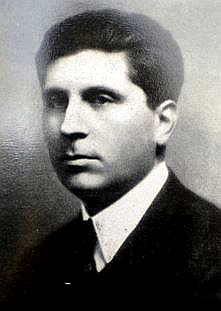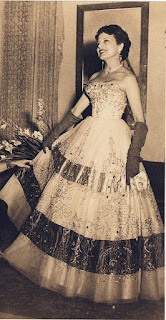Turned family business into multinational company
 |
| Giovanni Buitoni took over the running of the family business when he was just 18 |
The Buitoni family had been making pasta since 1827, when Giovanni’s great grandmother, Giulia, opened a small shop in the Tuscan town of Sansepolcro, in order to support the family after her husband, Giovan Battista Buitoni, had become ill. She had her own recipe for pasta that used only high quality durum wheat.
Giulia had pawned her wedding jewellery in order to set up the shop but the business did so well that in 1856 two of the couple’s nine children, Giuseppe and Giovanni, opened a factory in Città di Castello, just over the border in northern Umbria, to manufacture pasta using a hard durum wheat they sourced in Puglia.
Giovanni’s sons, Antonio and Francesco, continued the company’s expansion, founding manufacturing plants in other towns, including Perugia.
It was in Perugia in 1907 that Francesco, noting the increasing popularity of chocolate, joined with several partners in launching the Perugina confectionary company.
 |
| Baci chocolates have been one of the most famous lines made by the Perugina chocolate company |
He curtailed his trip on receiving news that his father’s Perugina chocolate company was on the brink of bankruptcy. Already bursting with ideas for improving business, he persuaded his father to let him take over general management of the company at just 18 years old and succeeded in turning it into a profit-making concern.
Within only a short time, Perugina had expanded from a small basement operation to large factory with hundreds of workers. He installed modern machinery in the plant and introducing new products, among them the famous Baci -‘kisses' - chocolates still produced today, each containing a love note, which were the idea of Luisa Spagnoli, one of his father’s partners - and Giovanni's clandestine lover at the time - who went on to become famous in the fashion industry.
 |
| The Buitoni name has been visible in Italian shops since 1827, when the first Buitoni store opened in Sansepolcro |
Always an innovator, he increased sales of Buitoni pasta products even in the Great Depression of 1930s by putting picture cards inside each packet for customers to collect. Customers who collected complete sets of the cards were eligible to take part in a radio contest and win prizes, including a FIAT automobile.
Giovanni Buitoni was by now an individual of some stature in Perugia, whose citizens he served as Podesta - mayor - from 1930 to 1935. In 1936, he married the opera singer, Letizia Cairone.
 |
| Letizia Cairone married Buitoni in 1936 |
In 1939, Giovanni and his wife were invited by the Hershey Chocolate Company, who were holding a 30th anniversary celebration at their headquarters in Pennsylvania, to visit the United States.
They also attended the 1939 World’s Fair to New York City to promote their own products. With his typical entrepreneurial vision, having noted how much visitors were being asked to pay for food, Giovanni opened a pop-up spaghetti café on the site, selling plates of pasta dressed in simple sauces at 25 cents each. He and Letizia cooked about 15,000 portions over the course of the event.
They found the American lifestyle to their liking and stayed on for a while afterwards. Unfortunately, before they could return to Italy the Second World War broke out, and once Italy had declared war on the side of the Germans, Giovanni and Letizia were unable to travel or access their money.
With no option but to stay and fend for themselves, Letizia followed the lead of Giovanni’s great grandmother and pawned her jewellery, enabling Giovanni to find a small premises in which to open a pasta factory in New Jersey.
Thanks in part to his vision in promoting the Buitoni name at the World’s Fair, the brand began to sell. Within 15 years, the Buitoni Foods Corporation had a much bigger factory in South Hackensack, New Jersey and later another one in Brooklyn. A spaghetti restaurant in Times Square, New York City, followed, along with a Perugina shop on Fifth Avenue.
 |
| Carlo De Benedetti sold the Buitoni business to Nestlé for $1.4 billion in 1987 |
A gifted amateur basso profundo, he was able to realise one of his dreams during his stay in the United States, to sing opera at Carnegie Hall in New York. He invited family, friends and employees to make an audience and, with the help of professional singers Licia Albanese, a soprano, and the baritone Anselmo Colzani, sang arias from Don Giovanni, Rigoletto and Ernani.
Giovanni Buitoni retired from the operational management of the Buitoni group in 1966. He and Letizia had no children and his nephew, Marco Buitoni, succeeded him as president and chief operating officer. Giovanni died in Rome in January 1979.
The business was sold in 1985 to the industrialist Carlo De Benedetti, who owned Olivetti and the newspaper La Repubblica among other things. He in turn sold it for $1.4 billion to its current owner, Nestlé.
 |
| The Fontana Maggiore in Perugia's Piazza IV Novembre |
Perugia, the capital of the Umbria region, is an ancient city that sits on a high hilltop midway between Rome and Florence. In Etruscan times it was one of the most powerful cities of the period. It is also a university town with a long history, the University of Perugia having been founded in 1308. The presence of the University for Foreigners and a number of smaller colleges gives Perugia a student population of more than 40,000. The centre of the city, Piazza IV Novembre, has a medieval fountain, the Fontana Maggiore, which was sculpted by Nicolo and Giovanni Pisano.
 |
| A view across the rooftops of Sansepolcro |
Sansepolcro is a town of 16,000 inhabitants situated about 38km (24 miles) northeast of Arezzo in the east of Tuscany, close to the borders with Umbria and Marche. The historic centre is entirely surrounded with fortified walls, built in the early part of the 16th century. The centre of the town is the Piazza Torre di Berta, named after the 13th-century tower of the same name, off which can be found the impressive Palazzi Pichi and Giovagnoli and the 14th-century cathedral, dedicated to St John the Evangelist. The city is famous as the place in which the brilliant early Renaissance painter Piero della Francesca was born and died.
More reading:
Michele Ferrero, the man who invented Nutella
Mario Pavesi, the biscuit-maker who gave Italy the Autogrill
Anselmo Colzani and his 16 seasons at The Met
Also on this day:
1835: The birth of pioneer criminologist Cesare Lombroso
2007: The death of author and journalist Enzo Biagi
Vino Novello - Italy's 'nouveau' - goes on sale
Home




